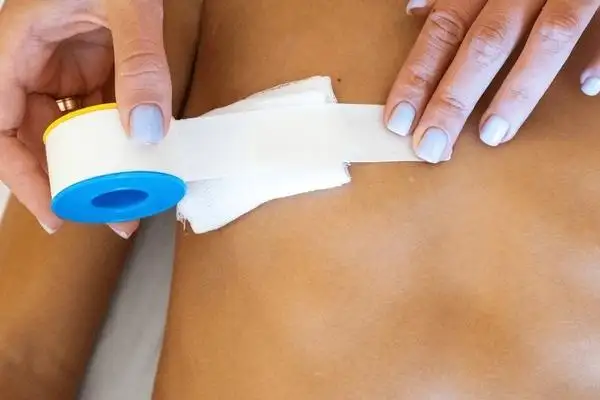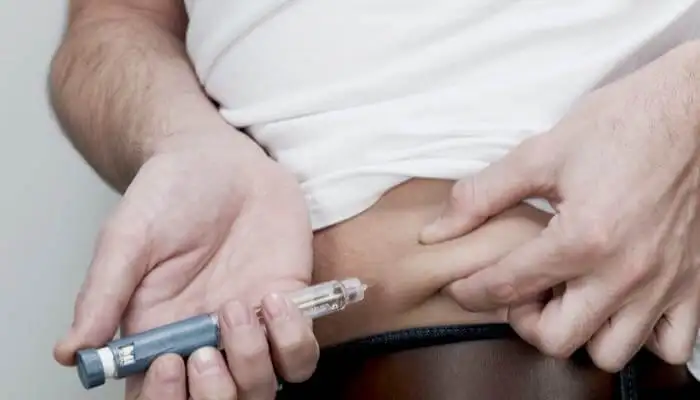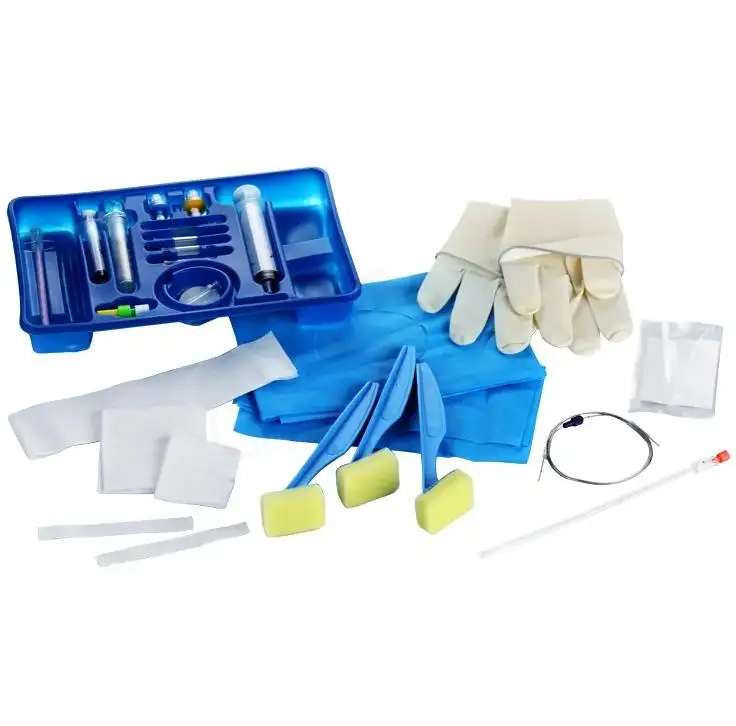Medical Hypodermic Syringe Types and Their Common Uses
Medical hypodermic syringe performance determines whether a dose is delivered safely, comfortably, and on time. From busy vaccination rooms to home self-care, every decision - syringe type, needle gauge, and accessory choice - shapes outcomes. At Greetmed, a leading provider of medical supplies, diagnostics, and rehabilitation equipment, we build systems that simplify clinical work while protecting patients and staff.

Choosing The Right Medical Hypodermic Syringe
Selecting a medical hypodermic syringe starts with three questions: What is the clinical task, how precise must the dose be, and what level of safety is required? Day-to-day injections often rely on disposable syringes paired with sterile needles, delivering vaccines, analgesics, or antibiotics quickly and cleanly. When micro-dosing is critical - tuberculin tests, allergy screening, pediatric titration - fine graduations and low-dead-space designs help preserve accuracy and reduce drug waste. Endocrine care benefits from insulin-calibrated syringes that make subcutaneous dosing predictable and less painful. For high-throughput programs, pre-attached or safety-engineered options reduce setup time and lower contamination risk.
- Real-World Pain Points We Solve
Clinicians repeatedly tell us about three friction points: needlestick injuries, inconsistent quality between lots, and workflow complexity at the bedside. Greetmed addresses these with safety mechanisms that lock or disable after use, tight process controls that stabilize plunger resistance and clarity of markings, and intuitive packaging that speeds up set-up and disposal. Our single-use sterile materials meet international standards, support reliable aspiration when needed, and maintain a secure fit with standard hubs to prevent leaks or pop-offs during higher-pressure injections.
✅ Core Types And Best-Fit Scenarios
• General Disposable Syringes: Everyday injections, vaccinations, and medication draws in clinics, wards, and community care.
• Safety Clip Syringes: A plunger clip locks post-dose, helping prevent reuse and accidental exposure in fast-moving settings.
• Auto Self-Destruction Syringes: A one-and-done mechanism disables the device after a single dose - ideal for public health campaigns and reuse-prevention policies.
• Insulin Syringes (U-100): Fine-gauge needles and clear, easy-read graduations for comfortable, accurate subcutaneous dosing.
• Tuberculin (TB) Syringes: Small-volume barrels with precise graduations for skin testing, pediatrics, and allergy protocols.
Common Uses, Accessories, And Safety Essentials
Safe injections are never just about the barrel and plunger. Around the medical hypodermic syringe are accessories that determine real-world performance: high-quality needles, secure hubs, protective caps, sharps containers, and reliable IV components. In vascular access, well-matched cannulas and infusion sets support consistent flow and reduce the chance of infiltration. Regulated flow sets maintain target rates over time, while transfusion and infusion lines depend on biocompatible materials that resist kinking and preserve sterility from spike to patient.
In daily practice, speed must not compromise precision. Syringe volume should match the intended dose so the clinician can read increments confidently. Needle gauge must align with medication viscosity: thicker formulations may require a wider bore; thinner solutions - such as many vaccines - work best with finer gauges that improve comfort. Safety mechanisms provide a second layer of protection at removal and disposal, especially when staff are gloved, fatigued, or working in crowded rooms. For home users, clear markings, smooth plunger travel, and straightforward disposal guidance help improve adherence and reduce anxiety.
✅ Selection Tips For Everyday Practice
- Match Volume To Dose: Use the smallest barrel that holds the full dose to improve reading accuracy.
- Pair Gauge With Viscosity: Viscous drugs often need wider needles; insulin and many vaccines favor finer gauges to reduce pain.
- Prioritize Safety Where Throughput Is High: Auto-disable or clip-lock designs cut reuse risk during campaigns and busy clinics.
- Improve Patient Comfort: Silicone-coated plungers and polished needle tips help minimize insertion force and post-injection soreness.
- Plan Disposal From The Start: Position sharps containers at the point of care and label waste streams clearly to reduce injury and compliance risk.

Why Greetmed Is Your Trusted Partner
As a comprehensive supplier, Greetmed supports the full injection workflow - from product choice and staff training to final disposal. Each medical hypodermic syringe we supply is engineered for clarity, consistency, and safety: transparent barrels resist haze, high-contrast graduations withstand handling, and stopper seals maintain smooth, predictable plunger motion. Our needle-hub compatibility helps maintain a tight, reliable connection, while tamper-evident packaging preserves sterility until the moment of care.
We also understand policy and procurement realities. Public health teams need devices that prevent reuse without slowing the line. Hospital pharmacies seek stable quality across lots to simplify QA and reduce returns. Home-care programs value intuitive design that reduces coaching time and support calls. To serve these needs, our portfolio spans safety-engineered hypodermic syringes for injury prevention and single-use sterile hypodermic syringes for routine care, alongside accessories that keep the entire system working together.
What Differentiates Our Syringes
- Consistency You Can Feel: Smooth, even plunger resistance and dependable negative pressure for clean aspiration.
- Graduations That Stay Readable: High-contrast scales resist smudging and wear, supporting accurate dosing over the device's intended use.
- Safety By Design: Post-use lockout or auto-disable mechanisms help protect staff and discourage reuse.
- Reliable Compatibility: Secure fit with standard hubs and accessories to limit leakage events and reduce rework.
- Comfort Forward: Fine-gauge options and low dead space help reduce pain and medication loss, especially in repeated-dose regimens.
Behind the product line stands our approach to operations. Serialized packaging strengthens supply-chain transparency, helping procurement and compliance teams verify source and lot history. Clear instructions-for-use make onboarding faster for new staff and simpler for refresher training. Consistent build quality reduces surprises in high-stakes environments, while scalable packaging options fit everything from outreach campaigns to tertiary hospitals.
Call To Action
If you're ready to standardize on a safer, simpler medical hypodermic syringe portfolio, talk with Greetmed. Request samples, technical data, or implementation guidance, and our specialists will help you tailor solutions that align with your clinical protocols, training plans, and budget - so your teams can deliver care with confidence, case after case.
Submit Your Request
Recent Posts
Tags
- Adult Diapers
- Are custom medical devices safe
- Baby Diapers
- Can respiratory anesthesia be used
- Digital Healthcare
- Do you offer customized consumables
- European Market
- How do you take care of a skin wound
- Industry Trends
- Lady Sanitary Napkins
- Medical Devices
- OEM Medical Devices
- Product Introductions
- Protective Equipment
- Under Pads
- What are custom-made medical devices
- What are diagnostic products
- What are hospital dressing products
- What are medical tube catheters
- What are some common protective equipment
- What are the appropriate applications for hospital dressing products
- What are the appropriate uses for protective equipment
- What is a gynecological examination
- What is a medical consumable
- What is an anesthesia kit
- What is an OEM in medical devices
- what is an wound skin care
- what is can disposable ultrasonic diagnostic
- What is good manufacturing medical devices
- What is hospital-grade protective equipment
- what is medical equipments hospital furniture
- What is medical sterilization wrapping
- What is rehabilitation equipment device
- What medical consumables do you supply
- Where can I find laboratory consumables wholesale
- where can I find medical protection device
- where to buy hypodermic accessories
- where to buy medical apparel
- where to buy medical consumable accessories
- where to find OEM medical device supplier
- where to find rehabilitation equipment supplier









